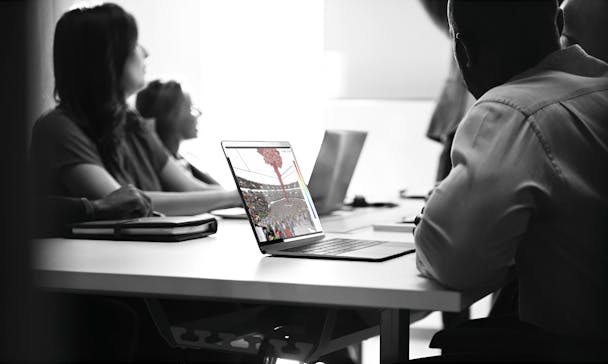Pathfinder 2009.1.0306 RC1
Pedestrian movement clarity without complexity

Version: 2009.1.0306 RC1
March 6, 2009
What's New
This release is the first release candidate for the full commercial version of Pathfinder.
Improvements over the Previous Release:
- The Users Guide, Example Guide, and Technical Reference have been updated.
- Fixed a bug that could cause the velocity of an agent to exceed the maximum.
- Fixed a bug that caused the max speed to ignore the stairway modifier when inertia was turned off.
- Adding occupants to stairways will no longer cause the occupants to be placed in invalid locations.
- The simulation clock will now be shown in 3D results screen shots and videos.
- 3D results will no longer crash when encoding movies with the xvid codec.
- Re-arranged the Create Movie dialog. Clicking OK will now make the movie.
- Added 2D time history plots for occupant counts and door flow rates.
- By default, CSV output will now be generated at 1 second intervals (down from 5 second intervals).
- The Show All Floors option has been moved to the Floor box.
- Renamed "Overlay Navigation Mesh" to "Show Mesh Triangles"
- In the 3D Results, paths are now shown using the occupants' color.
- The 3D Results now streams input to allow visualization of very large results files.
- Changed the install location of some DLLs to fix a launch error for the 3D results.
- One or more 3D occupant models can now be selected for individuals or profiles.
- Changed installer technology - the installer now uses Microsoft's install system.
- Fixed a file name problem that prevented the simulation clock from showing in the 3D Results.
- Improved the conflict resolution model to allow occupant counter-flow in steering mode.
- Model design problems that cause mesh topology errors will now cause a warning to be displayed before running the simulation.
- It is now possible to make the simulation mesh transparent in the 2D design view. This makes it easier to remove internal mesh pieces for furniture, etc.
- Substantially reduced the memory requirements of the 3D results program.
- Pathfinder will no longer crash when traversing into a new folder in the File/Save dialog.
- Added a Set Z action that allows you to move multiple rooms to the same Z-location.
- Occupants will now have the correct orientation for the first time step of steering mode simulations.
- Dxf import images and background images can now be shown in the 3D results.
- Snap grids can now be disabled in the 2D view.
- In the 3D results, occupants can now be selected.
- A "Remaining (Total)" column has been added to the CSV results. Occupants that fail to exit are no longer counted in the exit totals.
- Improved mouse selection for occupants.
- The Edit Profiles dialog now shows values using the selected unit system.
- The bounding box for the current selection is now shown in the properties panel.
- It is now easier to modify door widths and possible to modify stair widths.
- Pathfinder and the 3D Results will now launch when double-clicking PTH and output files.
- Improved the way Pathfinder remembers the selected unit system.
Known Issues:
- When using SFPE mode with collisions enabled, times can vary substantially from the pure SFPE mode. This is caused by several factors: in rooms where density is causing very slow walking speeds, occupants may not queue up quickly enough to be limited by the door queue release speed. In congested conditions, occupants may be pushed back through doors and have to wait on the queue again. SFPE mode occupants with collisions enabled, corner more slowly that pure SFPE mode occupants.
- Occupants do not attempts to optimize door queues when exiting rooms. This can lead to artificially slow results when using certain geometric features (e.g. divided doors). The current workaround is to merge divided exits.
- In some cases of very dense initial crowding, the initial delay feature can cause agents to artificially "stack" or queue. This happens when there is very little space between two occupants, and the delayed occupant is interposed directly between another occupant and it's current way point.
- In some cases, when turning, occupants do not utilize the full width of doors or hallways.
- Running a simulation does not cause the properties panel to commit changes. Users must press enter of change the focus to get properties changes to "stick" prior to running a simulation. This can be confusing when modifying a single property between simulation runs.
Questions about activating your license?
We have answers
Use one of the links below for information about activating your license

Tutorials and support ready to help you advance
Learn the Fundamentals
- Create Models
- Define Profiles
- Add Occupants
- Analyze Results
